Have you ever heard of rakia? I can honestly say, I hadn't until I set foot in Sofia, four years ago. Rakia is a spirit / fruit brandy popular in the Balkans. In Bulgaria, archaeologists have discovered a fragment of a distillation vessel as well as a pottery shard inscribed with the word "ракия" (rakiya) dating back to the 11th and 14th centuries respectively. For these reasons, some historians (and throngs of average citizens) believe the origin of this elixir to be Bulgaria.
Rakia is generally served with the salad course of a meal in a special small glass with or without ice depending on the season and personal preference. It has been used ritually at Orthodox Christian burials by spilling it on the ground as a way of sending the deceased off to a peaceful rest. At weddings, the father of the groom will go from table to table offering rakia to toast to the future happiness of the newlyweds.
One a rainy Sunday afternoon, @brentssanders and I hit the road in search of a rakia distillery in the small Bulgarian village of Polyanovo. I found whole the process fascinating and I invite you to join my photographic tour.
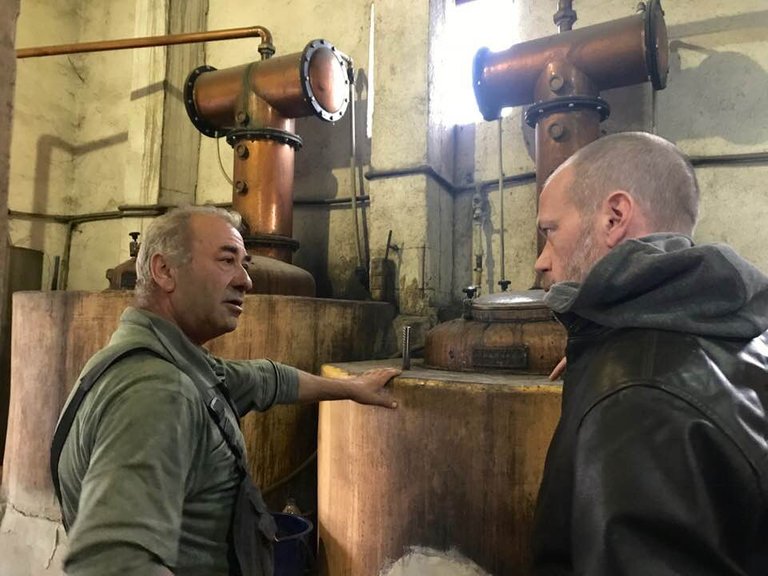
This is Камен (Kamen) explaining the distillation to Brent. In a nutshell, fruit mash and water are placed in copper cauldrons and are "cooked" over a wood burning furnace for about 3 hours. We arrived about an hour and a half into the process so the rest of my photos pick up the action from that point.
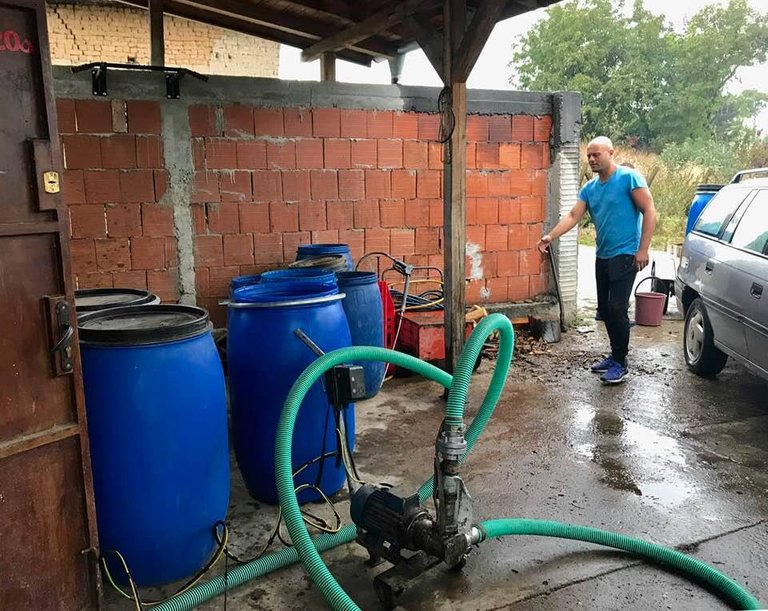
While some people do make homemade rakia, those who don't have the time or the equipment bring their fruit mash here. It is placed in the blue barrels where it awaits its transformation.
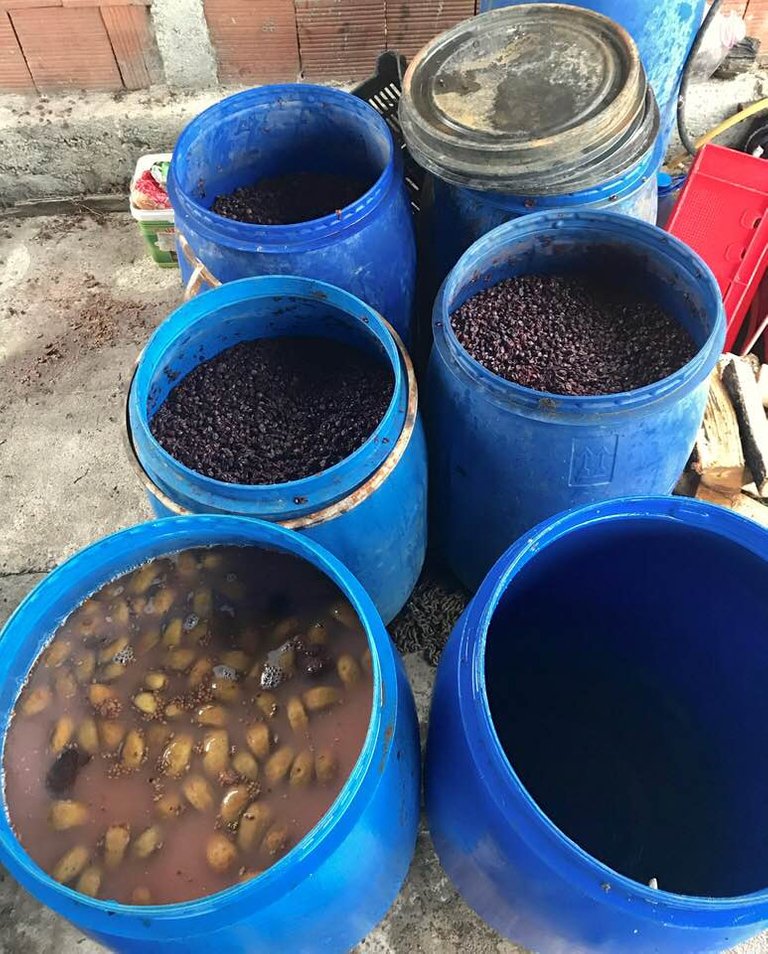
Rakia is made from a variety of fruit such as apple and grape (as seen in these barrels) but also plum, apricot, peach, pear, mulberry, quince, fig and cherry. My favorite is fig. It's light and smooth...perfect for my tender palette.
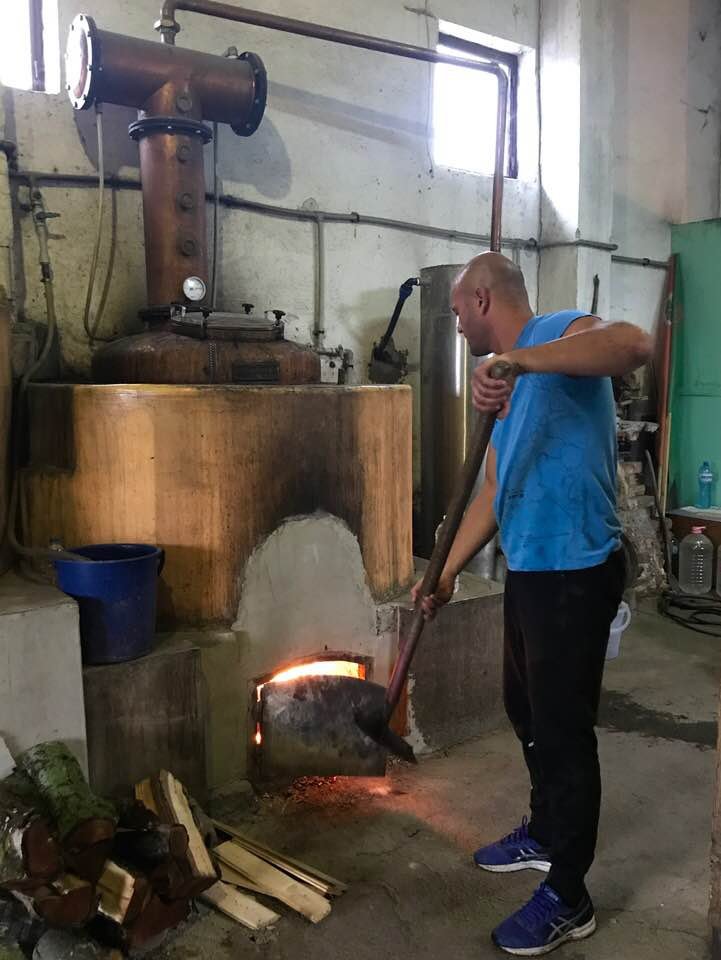
This is Ангел (Angel) stoking the fire in order to keep it at a consistent temperature. The fruit mash and water are cooking down and becoming steam that travels, first up into that copper "T" then, through the pipe into the stainless steel tank where it cools and becomes liquid once again.
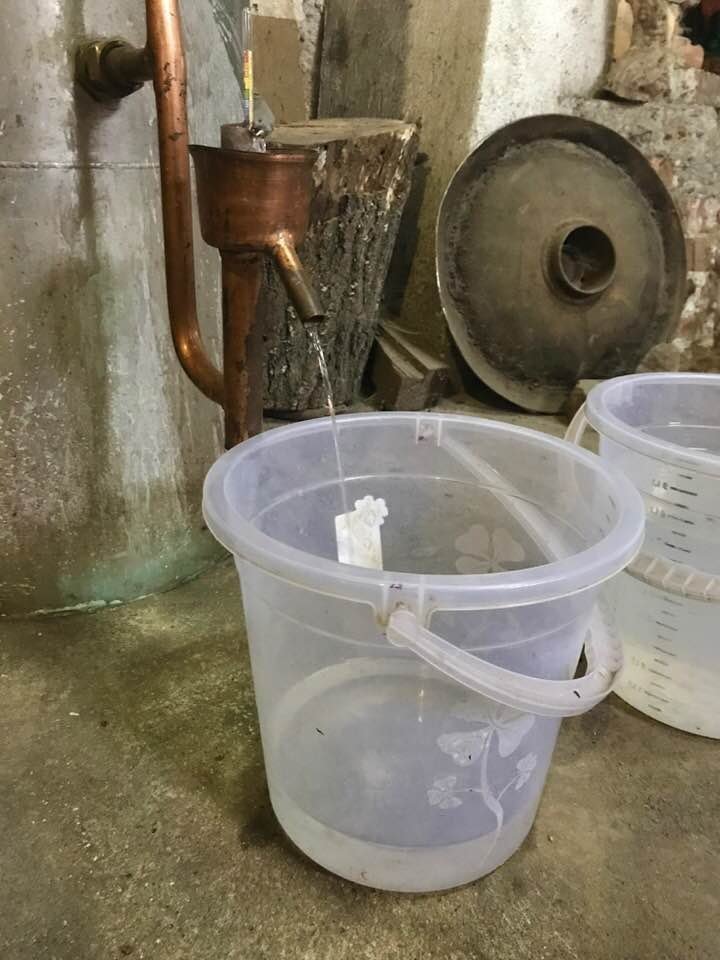
The liquid is then pumped out of the steel tank in into buckets which are dumped back the blue barrels. The first batches out of the still can be 70% alcohol! Just for a point of reference here, your average beer's alcohol contents is 4 - 6%.
Rakia is generally clear but, after the distillation process, honey, herbs, anise, juniper or roses can be added to enhance the flavor and give it a little color. For those of you who prefer a sweeter drink, I recommend honey rakia...it's heavenly! My recommendation comes with a warning. Because of the high alcohol content you can go from heaven to another, less pleasant place in a hurry!!! 😇 😝
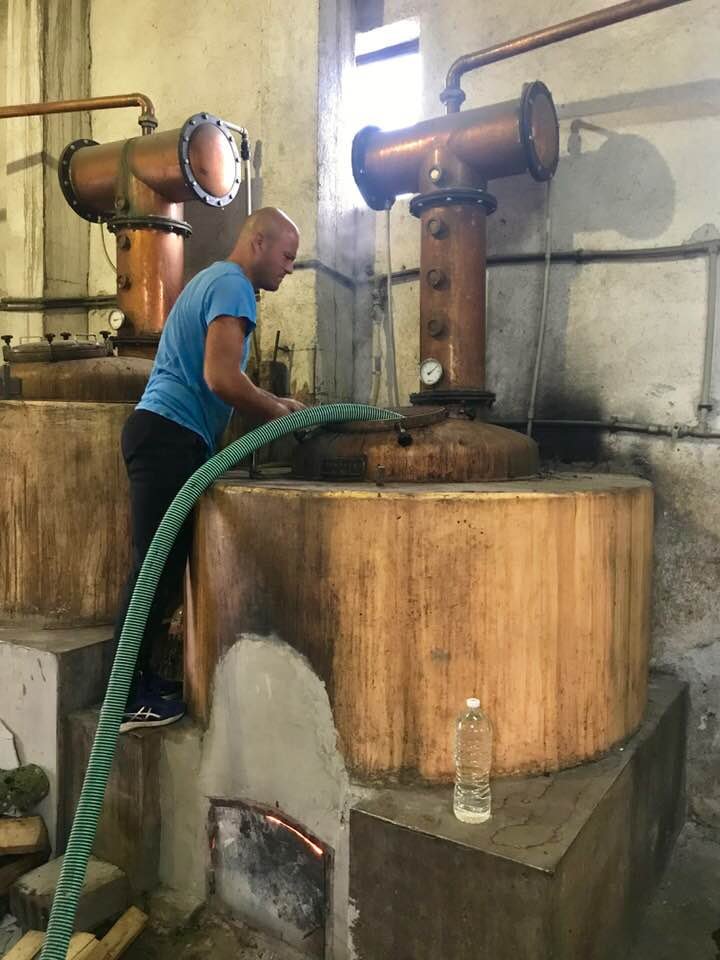
We are now at the end of the process where the remaining contents of the still are pumped out into more blue barrels. Here is where things get fuzzy for me. I am wondering if the rakia already extracted is poured on top of the dregs? If anyone knows the answer to that question, please leave it in the comments below.
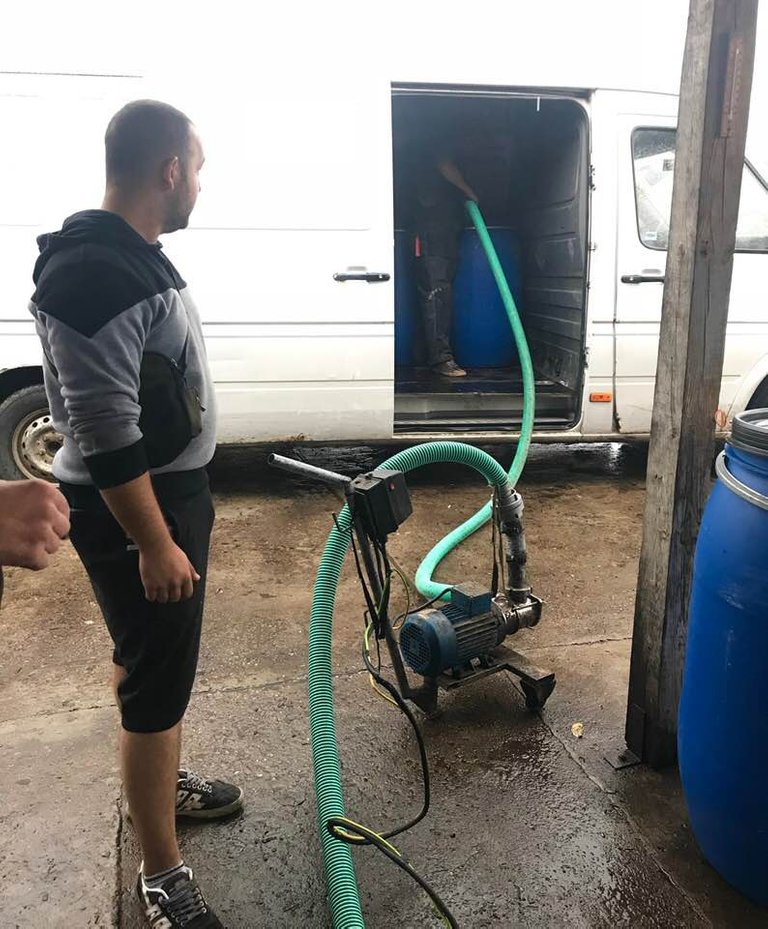
Here is Пешко (Peshko) monitoring the pump. At this level of production, the making of rakia is a team sport.
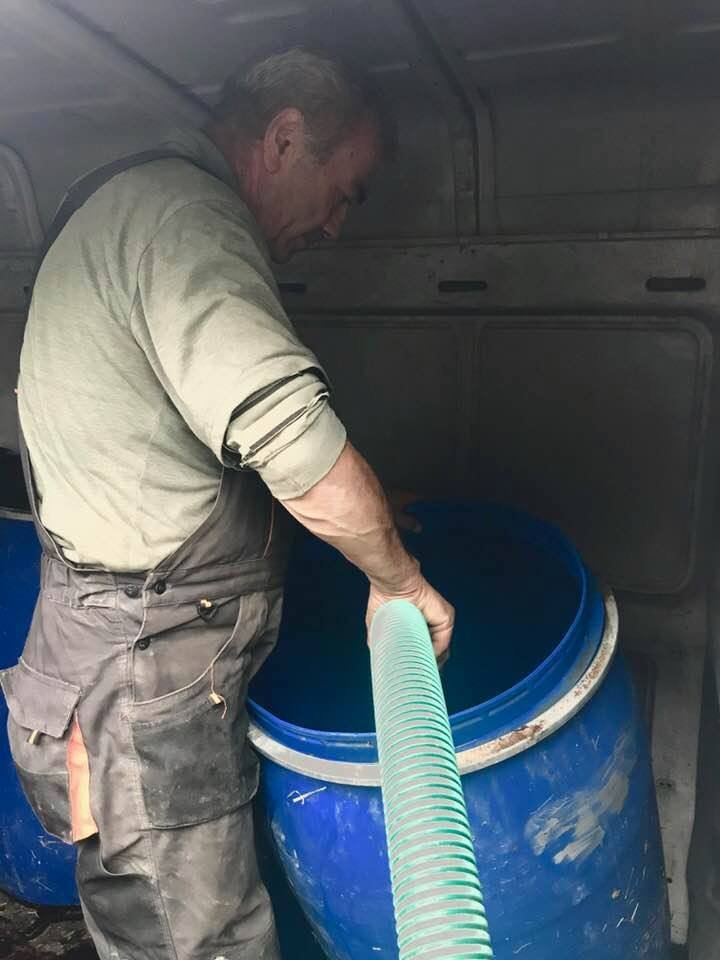
Into the barrel it goes.
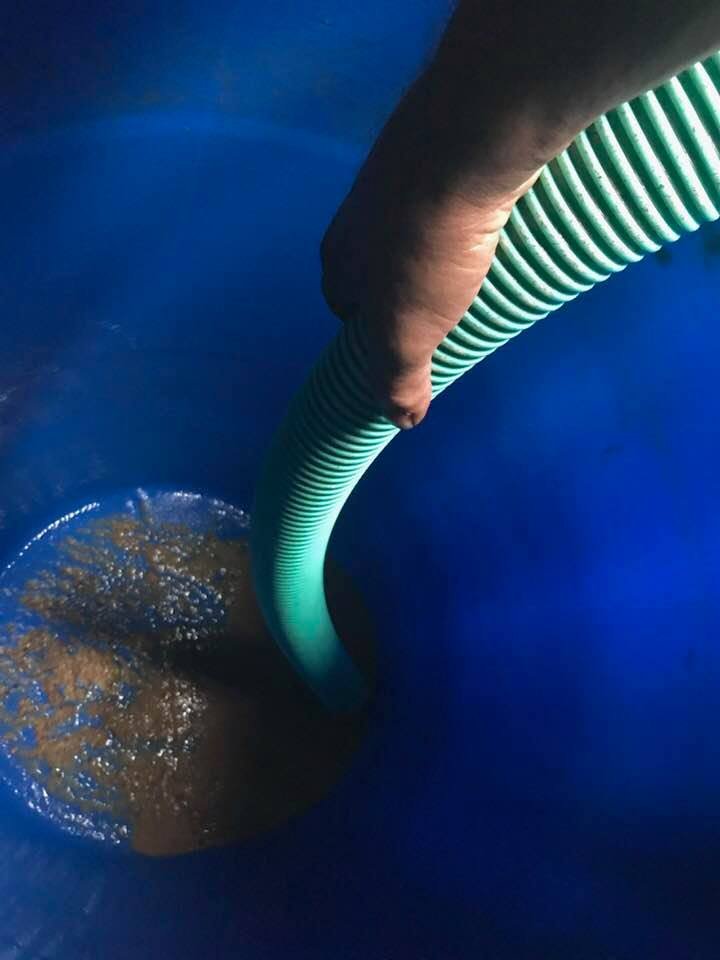
This is my favorite shot of the day. I love the weirdness which borders on being artistic, don't you agree? 😉
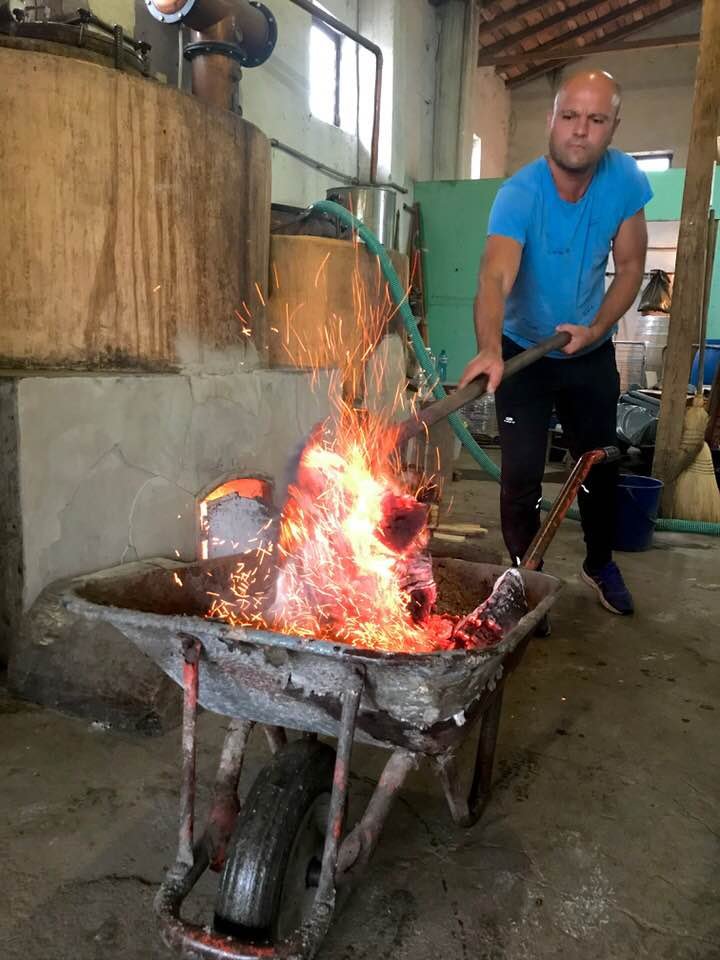
After everything is pumped out of the cauldron, the furnace is emptied so they can start the process all over again.

The embers found their new home outside in the rain.
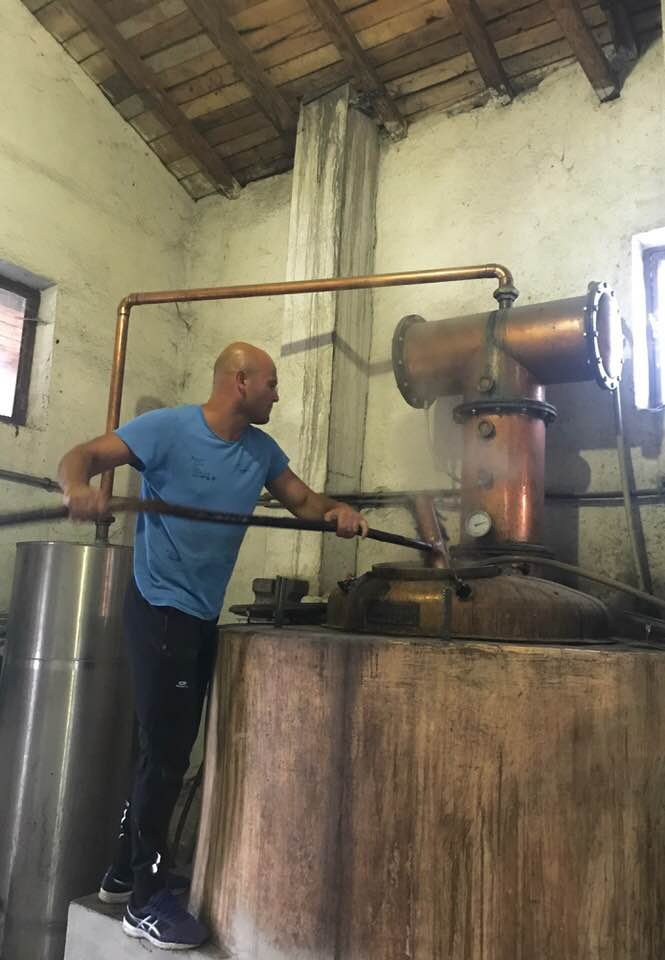
Once the cauldron is steam cleaned, it is ready for the next batch.
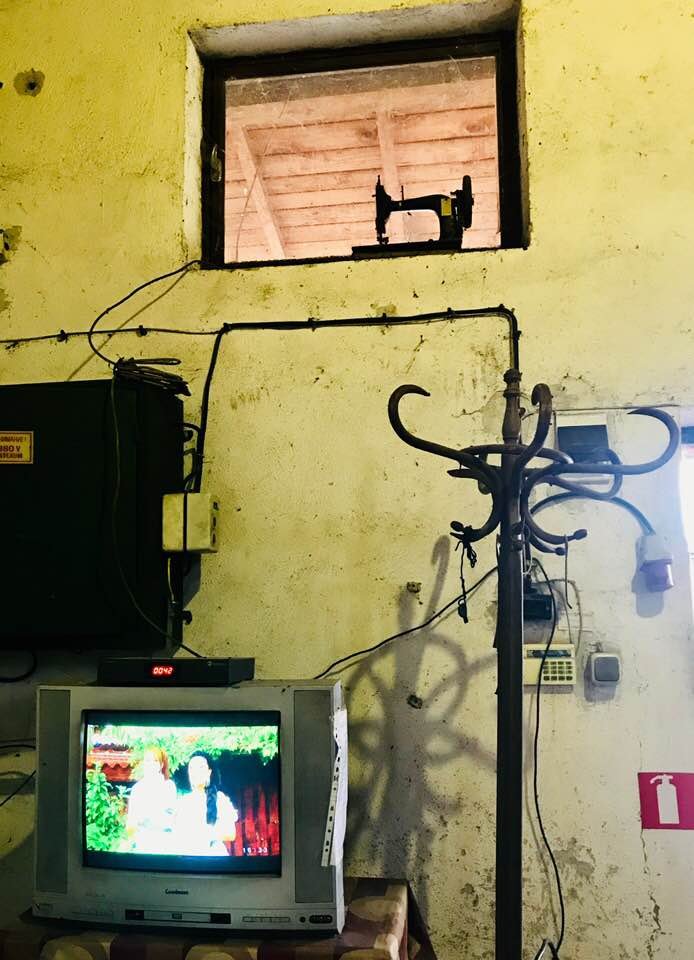
AND JUST FOR FUN: Those of you who know me, know I have an affinity for odd juxtapositions. This shot fits that bill for me. Why is there a sewing machine on the window sill that is 9 feet off the ground? Look at that fantastic shadow of the coat rack! The Bulgarian folk music on the television was an added bonus!!!
This day was truly a cultural experience for me. I enjoyed learning about the process and Kamen, Angel and Peshko were so hospitable! Somehow, rakia now tastes better to me. I encourage you to find yourself a glass and give it a try. Наздраве (Nazdrave) / Cheers!
P.S. If anyone with more knowledge of this process has anything else to add, please don't hesitate to leave a comment!
!steemitworldmap 42.716054 lat 27.175989 long Polyanovo, Bulgaria d3scr

I had never heard of it but I'd love to try it too. And for that picture all may have a reason to be :) ;)
I'm glad I piqued your interest!
Наздраве!
Congratulations, Your Post Has Been Added To The Steemit Worldmap!
Author link: http://steemitworldmap.com?author=samanthajbarnesPost link: http://steemitworldmap.com?post=the-making-of-bulgarian-moonshine-polyanovo-bulgaria
Want to have your post on the map too?
I haven't heard of rakia before but I'd LOVE to try some. I usually use different fruits in the second ferment of kombucha as the extra 'sugar' gives it an extra zing.
Great photographs Samantha. Love the last one ~ The sewing machine looks like a toy up there on the window sill. 🦋
So good to see you pop up here! I am need to get reconnected with folks here on Steemit.
There certainly is a zing to rakia and a fair amount of heat. It has been an acquired taste for me. I'm glad I kept trying new flavors and finally discovered honey rakia...so, so good!
Thank you for your kind words and especially for commenting on the last one. It was all kind of a surreal experience. :D
Евала!
Благодаря, Габи!
It really was an interesting day!